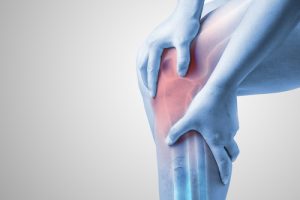
Here at Center for Spine and Orthopedics, we try to give you tips to reduce the level of pain you may be experiencing. By following these ten steps, you may be able to reduce pain in your knees, as well as improve other pain areas as well. For more information, call our office at (303) 287-2800.
Our knees take the full weight of our bodies so it’s no wonder that one in four adults suffers from painful knees. Try these self-help tips for knees.
1. Lose a few pounds
When you walk, the pressure in your knee is around five times your body weight – so even carrying a few extra pounds can make a big difference.
In fact, each 1lb lost results in a 4lb reduction in knee joint stress among overweight people with osteoarthritis, according to US research published in the journal Arthritis & Rheumatism.
Be prepared for your changing healthcare needs, with fast access to private knee replacement surgery if you need it in the future.
2. Get pedalling
Cycling is an excellent way to strengthen your knees and improve your all-round fitness. ‘If you don’t have a bike – or don’t feel confident enough to ride on the roads – you could invest in a simple pedal machine that sits on the floor ,’ suggests physiotherapist Tim Allardyce
‘They cost around £40. It will help keep your legs mobile, and give some all-important movement to the knee joints. If you feel able, go one better with a static bike and aim to cycle for 15 minutes three times a week.’
3. Ditch the high heels
Walking in heels puts the knees under extra strain, which increases wear and tear and may lead to osteoarthritis over time.
A recent study from Stanford University Medical Center in the US found that wearing high heels changes the walking gait, especially around the knee joint.
The higher the heel, the more likely it is that your knee will still be bent when your shoe makes contact with the ground – increasing pressure on the joint.
4. Try acupuncture
Acupuncture can be very effective in the treatment of knee pain,’ says Tim Allardyce. ‘It might sound painful, but acupuncture needles measure less than half a millimetre, so you won’t feel much discomfort at all. The treatment works by reducing the pain signals that go to the knee.’ Find a qualified acupuncturist through the British Acupuncture Council.
5. Give tai chi a go
Tai chi is as effective as physical therapy at addressing the symptoms of knee osteoarthritis. That’s according to a recent study from Tufts University School of Medicine in the US, which compared the two approaches – and found that people who completed 12 weeks of twice-weekly tai chi experienced the greatest improvements in their mood, pain levels and mobility.
The ancient Chinese system – which combines deep breathing and relaxation with slow, gentle movements – can also improve flexibility and reduce joint pain in people with rheumatoid arthritis. Find a tai chi instructor in your area.
6. Pace yourself
Exercise is important, but don’t overdo it. ‘Use your knees, but don’t abuse them,’ advises Tim Allardyce. ‘Gentle activity, such as walking, will improve joint mobility and reduce pain – but if you suffer a lot of discomfort, a little bit of rest can also help. So avoid long hours gardening or hiking on difficult terrain.’
7. Build stronger legs
By strengthening your leg muscles – and the thigh muscle in particular – you’ll help to reduce the strain on your knees.
‘One of the best ways to do this is to get squatting,’ says Tim Allardyce. ‘Remember, we squat whenever we sit down on the loo or get into a car. A controlled squat is perfectly safe for the knees. You can do it with a Swiss ball between your back and a wall, and just go down as far as feels comfortable. Try five to 10 repetitions daily.’
8. Don’t get bent out of shape
Never keep your knees bent for too long – particularly when you’re sitting – as this weakens the supporting muscles. If you’re watching TV, try doing a few straight-leg raises. Sit well back in the chair then straighten and raise one leg off the ground. Hold it for a count of 10 then lower and repeat with the other leg. Aim for 10 repetitions.
9. Apply some ice and heat
Already in a lot of pain? ‘Known as “contrast bathing”, ice and heat is one of the most effective ways to reduce inflammation,’ Tim Allardyce explains.
‘Take an ice bag or pack of frozen peas wrapped in a tea towel and place it over the front of your knees. Hold it there for five minutes, then take it off and place a hot water bottle with a warm cover over the front of your knee for 10 minutes. Do this daily and you’ll be surprised how much pain relief you will get.’
10. Get a good night’s sleep
Poor sleep can increase sensitivity to pain among people with knee osteoarthritis, according to a recent study published in the journal Arthritis Care & Research. Or to put it another way: lying awake worrying about your knee pain will only make it worse.
Can’t get to sleep? Placing a pillow between or behind your knees may help you find a comfortable position. It’s also a good idea to speak to your GP or physiotherapist about bedtime relaxation techniques.
Original article on saga.co.uk.







